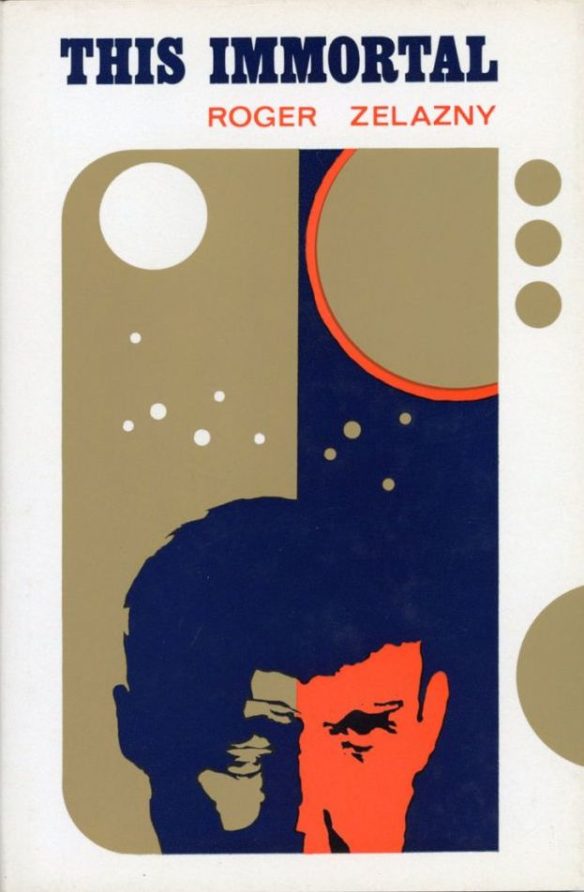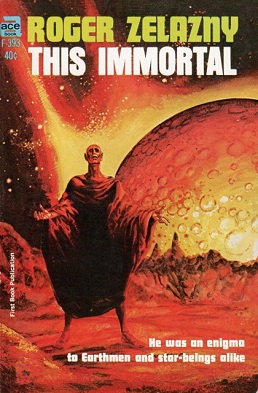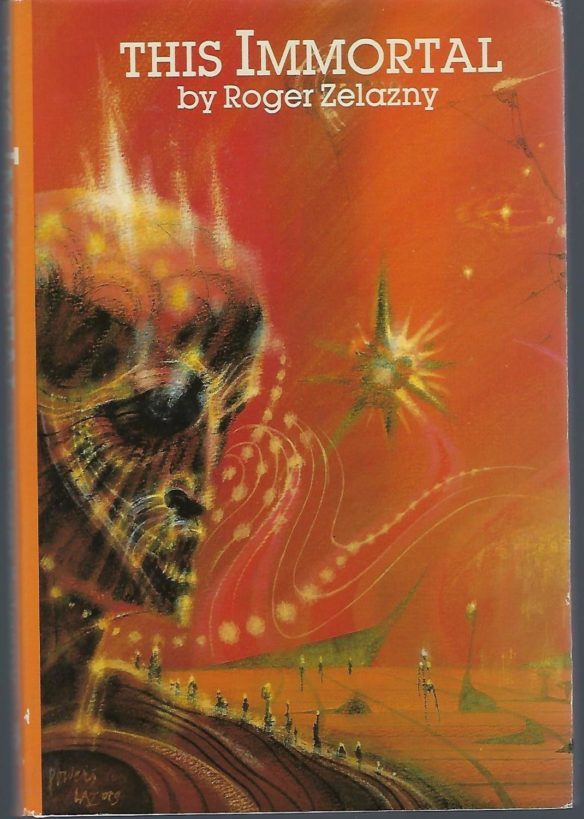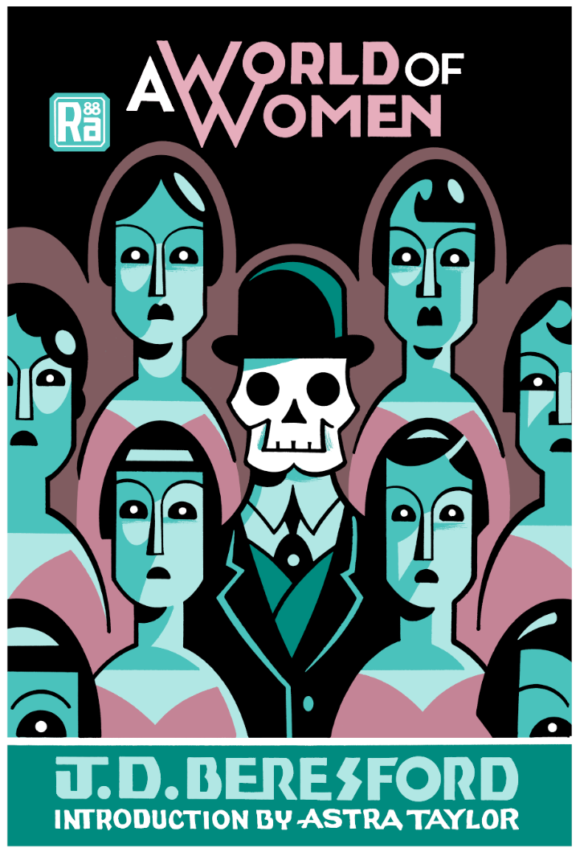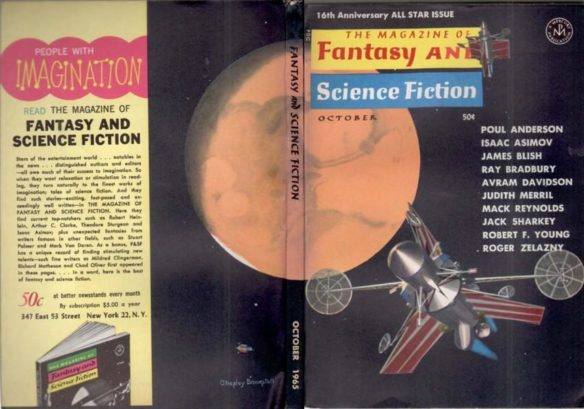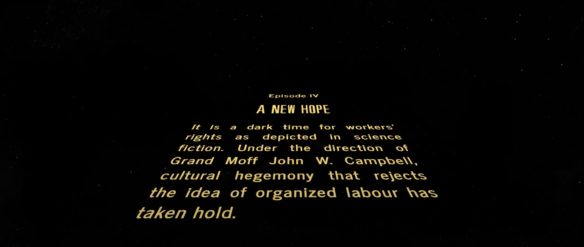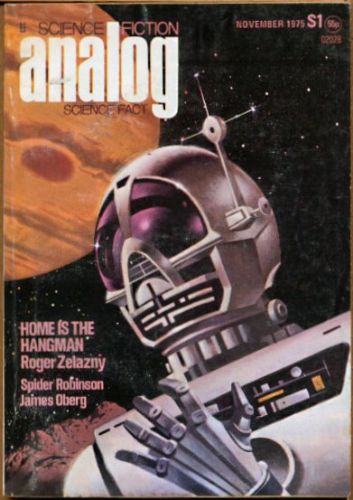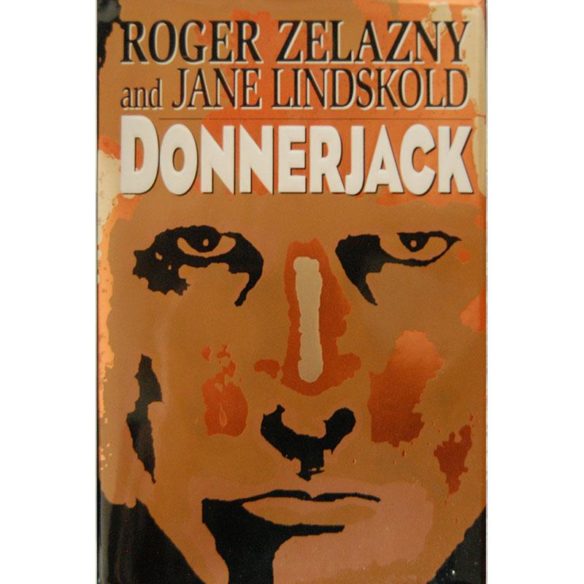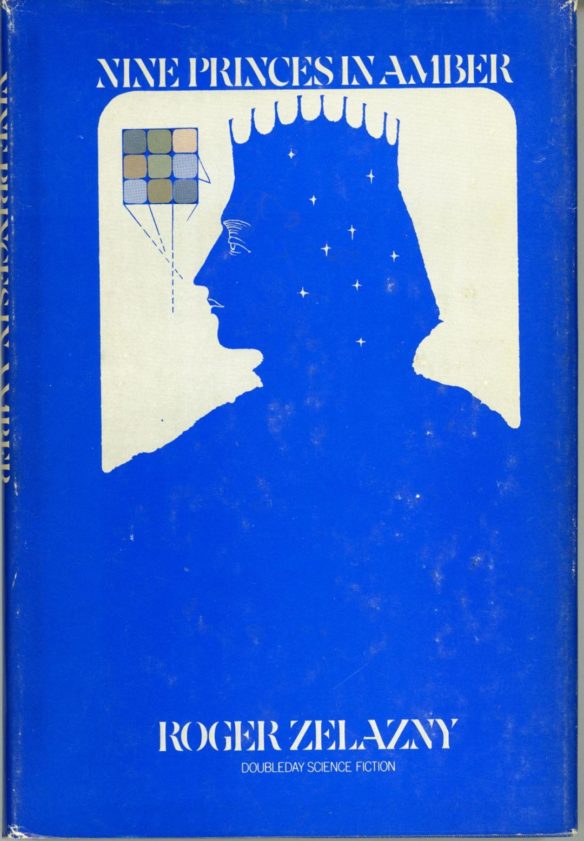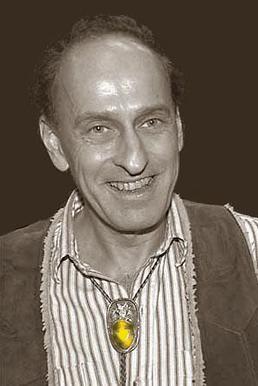(1) THE BROKEN MIRROR OF NOSTALGIA REFLECTS A FRACTURED PAST. [Item by Olav Rokne.] At the Escapist, possibly my favorite film critic Darren Mooney offers trenchant analysis on the recent phenomena of movies paying homage to previous works that were widely disliked when they first came out. In essence, he suggests that there may be a collective yearning for an imagined halcyon past that never really existed in the first place. “Phantom Menace & ASM: Why Are We Nostalgic for Things We Hate?”
Nostalgia isn’t memory. In many cases, what is being evoked in these nostalgic franchise extensions isn’t anything resembling reality or history, but instead an imagined object. This often involves a crass distortion of the original object, in order to flatter the presumed audience.
(2) YOUNG PEOPLE. James Davis Nicoll has the Young People Read Old SFF panel opine about Vonda McIntyre’s “Wings.” It was a very well-received story five decades ago, however, the reception comes with a bit of static now.
Although it has not been often reprinted, Vonda N. McIntyre’s 1973? “Wings” seems to have struck a chord with fans and fellow professionals. ?“Wings” was nominated for both a Hugo and a Nebula, losing the first to Le Guin’s ?“The Ones Who Walk Away from Omelas” and the second to Tiptree’s ?“Love Is the Plan the Plan Is Death”. ?“Wings” is one of two stories about an alien race whose name for themselves is never given. Their world dying, the species launches a generation ship for another star. 1974’s ?“The Mountains of Sunset, the Mountains of Dawn” details how the great migration played out. ?“Wings”, in contrast is focused on events on the dying homeworld, and the relationship of two persons there….
(3) FIYAH GRANTS OPEN. FIYAH Literary Magazine is accepting applications for grants to assist Black writers of speculative fiction in “defraying costs associated with honing their craft.” Three $1,000 grants will be distributed annually as part of Juneteenth every year. Applications for the Rest, Craft, and Study grants are being accepted through May 15, 2022. There also are two other grants. All the grants are limited to prose writers for now. [Via Tor.com.]
The Rest Grant — $1,000
The FIYAH Rest Grant is for activists and organizers with a record of working on behalf of the SFF community, but who are in need of respite or time to recommit to their personal projects. Application materials include a 1-2 page personal statement on one’s history of work or ongoing projects on behalf of an inclusive SFF space.
Study Grant — $1,000
This grant is to be used for defraying costs associated with attending workshops, retreats, or conducting research for a writing project. Application requirements include proof of acceptance to a workshop or retreat (where applicable), a 1-page description of the work requiring research, and a 3k-word writing sample.
Craft Grant — $1,000
This grant is awarded based on a writer’s submitted WIP sample or project proposal, in the spirit of assisting with the project’s completion. Application requirements include a 5k-word writing sample, a 1-page proposal or synopsis of the project in question, and an introductory document detailing your goals for the project after completion.
Two emergency grants of $500 will be awarded, in March and October.
Emergency Grant — 2x $500
This is a needs-based grant to assist Black SFF writers with emergency financial circumstances which may be interfering with their ability to write. Emergency circumstances may include but are not limited to threat of eviction, payment of school fees, compromised or destroyed equipment, injury, travel for family care-taking in a time of crisis, or disaster or medical related relief. The Emergency Grant is awarded biannually, once in March and once in October. Application requirements include a 1-page statement detailing the nature of the emergency need for funds and intent for its use.
There is also –
Editorial Grant
The FIYAH Editorial Grant is intended as a stipend for Black editors who have been accepted for an unpaid editorial internship or fellowship at a publishing house or literary agency in 2022-23. Application requirements include a personal statement detailing your editorial experience (or lack thereof) as well as your focus for your professional development and career going forward as an editor, agent, or other industry professional. A detailed critique of a SFF novel or novella you’ve read in the last 12 months is also required. Use the button below to access the application form.
This grant was made possible by a sponsorship from Sydnee Thompson.
Applicants for any FIYAH Grant must be 18 years of age by June 19th of the application year, and writers of speculative fiction. In addition:
FIYAH Grants, like our other submissions, are open to Black people of the African Diaspora. This definition is globally inclusive (Black anywhere in the world) and also applies to mixed/biracial and Afro-appended people regardless of gender identity or orientation.
(4) MAUS CREATOR COMMENTS ON BAN. In the Washington Post, Michael Cavna interviews Art Spiegelman about the recent efforts to ban MAUS. Spiegelman says he is happy that “the book has a second life as an anti-fascist tool.” The hardcover of MAUS is currently #3 on Amazon and two paperback editions are in the top 10. “Art Spiegelman, ‘Maus’ author, sees the book’s Tennessee school ban as a ‘red alert’”.
…The 10-member board in McMinn County chose to remove “Maus” from its eighth-grade language arts curriculum, citing its profanity and nudity. Now the New York-based author is sifting through the minutes of the board’s Jan. 10 meeting, trying to make some sense of its decision to target the graphic memoir, which previously has been challenged in California and banned in Russia. [Spiegelman’s] conclusion: The issue is bigger than his comic book.
In the current sociopolitical climate, he views the Tennessee vote as no anomaly. “It’s part of a continuum, and just a harbinger of things to come,” Spiegelman says, adding that “the control of people’s thoughts is essential to all of this.”
As such school votes strategically aim to limit “what people can learn, what they can understand and think about,” he says, there is “at least one part of our political spectrum that seems to be very enthusiastic about” banning books.
“This is a red alert. It’s not just: ‘How dare they deny the Holocaust?’ ” he says with a mock gasp. “They’ll deny anything.”…
(5) LOCKED STAR MYSTERY. James Davis Nicoll tells his Tor.com audience about “Five Flawed Books That Are Still Worth Rereading”. One of them is —
Sundiver by David Brin (1980)
…Modern readers will likely find Sundiver (the novel, not the spacecraft in the novel) a bit too much of its era; not in a good way. The treatment of women in this novel makes it obvious that the novel was published closer to the midpoint of the 20th century than to today. The “uplift” which gives Brin’s series its name involves a combination of genetic manipulation and selective breeding, though the humans in the novel decry the way senior galactic patrons treat their servant races. As to the science: Brin, even at the time, must have known that cooling lasers could not work as he has them work in the book. Too bad that many readers must have accepted this as science fact.
However! The novel in hand is not the grand-scale space opera one might expect. It’s a murder mystery on an isolated space craft. It just so happens that I am, in addition to being an SF fan, am also a fan of murder mysteries set in isolated locations. Sundiver was an engaging example of the form—it is hard to get more isolated than a location within the Sun….
(6) FREE BOOK UPCOMING. One of the three books Team File 770 advanced to the finals of the Self-Published Science Fiction Competition will be available free over the next few days. Martin Reed’s novel The Hammond Conjecture will be on free book promotion on Amazon from February 1-5.
(7) EARLY CINEMATIC VAMPIRE. Dutch fantasy writer Remco van Straten has dug up a Dutch vampire movie from 1919 called “Vampire: the Scourge of Amsterdam (1919)”.
As I looked through the Dutch newspaper archive for information on Nosferatu‘s Dutch premiere for a blog post, I stumbled upon something that I, fairly knowledgeable on horror film history, didn’t know about: an adaptation of Bram Stoker’s Dracula was produced in the Netherlands in 1919, a full three years before Murnau made Nosferatu in 1922!…
(8) FANCAST DOUBLE-DIP. Cora Buhlert has posted a double Fancast Spotlight for The Dickheads Podcast (as in Philip K. Dick) and Postcards from a Dying World: “Fancast Spotlight: The Dickheads Podcast and Postcards from a Dying World”.
Tell us about your podcast or channel.
I am involved in two fancasts. First and foremost is The Dickheads Podcast. We are in the 5th and maybe the final year of covering all of Philip K. Dick’s books in publication order. He has over forty novels published and at the time of this interview, we are about to record A Scanner Darkly the novel released in 1977….
On my own, I do a podcast called Postcards from a Dying World. In this show, I do whatever I want….
(9) THE PATTON OF SPACE FORCE. Season 2 of Space Force (dropping February 18 on Netflix) has a future where Patton Oswalt is an astronaut but the New York Jets are STILL terrible!
(10) HOLGER M. POHL OBIT. [Item by Cora Buhlert.] German SFF writer, editor and fan Holger M. Pohl died unexpectedly aged 63.
Pohl was a German SFF writer, editor and columnist for the fanzine Fantasyguide. He was the author of Arkland, a fantasy novel inspired by the sword and sorcery of the 1960s and 1970s,and contributed to the multi-author space opera series Die Neunte Expansion and Rettungskreuzer Ikarus. With Dirk van den Boom he co-wrote the space opera novel Welt der Sieben Ebenen. He was a common sight at German cons and beloved member of the German SFF community. I only met him once at the Dublin Worldcon. Very nice guy.
Here are some German-language obituaries: Markus Mäurer, “Holger M. Pohl – Ein Nachruf” at Translate or Die (the blog’s actual name); Dirk van den Boom, “Holger M. Pohl ist tot” at SF Boom; and the fanzine Fantasyguide where he had a regular column.
(11) MEMORY LANE.
1966 — [Item by Cat Eldridge] Fifty-six years at Tricon where Isaac Asimov was Toastmaster, Roger Zelazny’s This Immortal would win the Hugo for Best Novel in a tie with Frank Herbert’s Dune. It was first published in The Magazine of Fantasy and Science Fiction in October and November 1965, in 1966 by Ace Books, in 1967 by UK publisher Hart-Davis in hardcover, and later by the SF Book Club with a Richard Powers cover. Three other works were nominated: John Brunner’s The Squares of The City, Robert A. Heinlein’s The Moon is a Harsh Mistress which would win this Hugo the next year at NYCon 3 and Edward E. Smith’s Skylark DuQuesne.
(12) TODAY’S DAY.
January 31: National Gorilla Suit Day.
Mad Magazine artist Don Martin created the idea of National Gorilla Suit Day for a 1963 comic strip in which a character mocks the holiday and is then assaulted by gorillas and people in gorilla suits. Since that time, the holiday has been semi-celebrated every year by fans of Mad Magazine and Don Martin by dressing up in a gorilla suit.
(13) TODAY’S BIRTHDAYS.
[Compiled by Cat Eldridge.]
- Born January 31, 1921 — John Agar. Between the early Fifties and the Sixties, he appeared in many SFF films such as The Rocket Man, Revenge of the Creature, Tarantula, The Mole People, Attack of the Puppet People, Invisible Invaders, Destination Space, Journey to the Seventh Planet, Curse of the Swamp Creature, Zontar: The Thing from Venus, Women of the Prehistoric Planet and E.T.N.: The Extraterrestrial Nastie. Love that last title! (Died 2002.)
- Born January 31, 1937 — Philip Glass, 85. 1000 Airplanes on the Roof: A Science Fiction Music-Drama, Einstein on the Beach, The Making of the Representative for Planet 8 (with a libretto by Doris Lessing based on her novel of the same name), The marriages between zones three, four, and five (libretto by Doris Lessing, after her second novel from Canopus in Argos), The Witches of Venice and The Juniper Tree would be a very fragmentary listing of his works that have a genre underpinning. I’m very, very fond of the latter two works.
- Born January 31, 1960 — Grant Morrison, 62. If you can find it, his early stuff on such U.K. publishers as Galaxy Media and Harrier Comics is worth searching out. Not your hero in tights materials at all. For his work in that venue, I’d recommend his run on The Resurrection of Ra’s al Ghul, all of his Doom Patrol work (and the HBO Max series is based on his work and is quite spectacular), Seven Soldiers and The Multiversity which is spectacularly weird.
- Born January 31, 1962 — Will McIntosh, 60. Best known for the dozens of short stories he’s written that have been published in magazines including Asimov’s, Interzone, Lightspeed and Strange Horizons. He won a Hugo for his short story “Bridesicle“ at Aussiecon 4.
- Born January 31, 1968 — Matt King, 54. He’s Peter Streete in the most excellent Tenth Doctor story, “The Shakespeare Code”. His other genre performances are Freeman in the superb Jekyll, Cockerell in Inkheart based off Caroline Funke’s novel of that name, the ghost Henry Mallet in Spirited and Clyde in the recent maligned Doolittle.
- Born January 31, 1973 — Portia de Rossi, 49. She first shows up as Giddy in Sirens which would I’d stretching things to even include as genre adjacent but which is definitely worth watching. For SFF roles, she was in Catholic Church tinged horror film Stigmata, musical Zombie comedy Dead & Breakfast and werewolf horror Cursed. She was Lily Munster in the delightfully weird Mockingbird Lane pilot that never went to series.
(14) COMICS SECTION.
- Saturday Morning Breakfast Cereal has a theory about a unique turn of phrase.
(15) FUTURE TENSE. The January 2022 story in the Future Tense Fiction series, a monthly series of short stories from Future Tense and Arizona State University’s Center for Science and the Imagination about how technology and science will change our lives, is “If We Make It Through This Alive,” by A.T. Greenblatt, a story about a cutthroat future road race, the climate crisis, the ability/disability continuum, and much more.
Slate published the story along with a response essay by Damien P. Williams, a scholar of technology and society. “How heeding disabled people can help us survive the climate crisis.”
Aliza Greenblatt’s “If We Make It Through This Alive” is an immediately engaging story, but the deeper in you get, the more is revealed. And one of the starkest but most subtly played revelations comes near the very end, when the audience is confronted with twin harsh truths: Disabled and otherwise marginalized people are least often thought of when planning for the future—and what disabled people know from their experience of living in this world likely makes them better prepared than nondisabled people to survive whatever comes next….
(16) BLACK PANTHER HISTORY. As Black History Month approaches, Marvel is taking fans on a historical journey, uncovering the evolution of Marvel’s first Black superhero: T’Challa, the Black Panther. Marvel Entertainment and SiriusXM will launch their latest original unscripted podcast series, The History of Marvel Comics: Black Panther, on Monday, February 14.
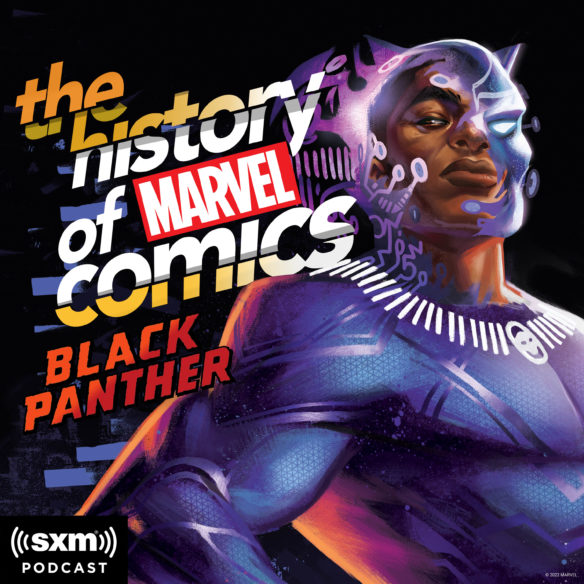
The six-episode documentary podcast, hosted by New York Times best-selling author Nic Stone (“Shuri,” “Dear Martin”), explores the comic book origins of the Black Panther through conversations with the creators who shaped T’Challa’s journey, celebrates the innately Afro-Futuristic world of Wakanda, and analyzes the larger social impact of the character.
The History of Marvel Comics: Black Panther brings writers, artists, and historians together to share a story that only Marvel can tell. The show features exclusive interviews with notable talent including Brian Stelfreeze, Christopher Priest, Don McGregor, Joe Quesada, John Ridley, John Romita Jr., Reginald Hudlin, Ta-Nehisi Coates, and more.
The show explores some of Black Panther’s most pivotal moments including Stan Lee and Jack Kirby’s 1966 debut of the character at the height of the Civil Rights Movement, his continued evolution through the birth of the Black Power Movement, his time with the Avengers and of course, the launching of Black Panther’s adventures.
The series will initially be available exclusively on the SXM App and Marvel Podcasts Unlimited on Apple Podcasts. Episodes will be widely available one week later on Pandora, Stitcher, and all major podcast platforms in the U.S. Learn more at siriusxm.com/blackpanther.
(17) PITCHLESS MEETING. Mad Genius Club’s Dave Freer pretty much doesn’t watch TV and rarely sees a movie, which isn’t a problem except in this one way — “Every word you say…”
…It’s a curse because the right way to do elevator pitches to editors was to describe your book as like X movie or TV series, meets Y movie or TV series. Mary Poppins meets Die Hard and have a bastard love-child would be about my level… but I have actually heard it done, with movies I had never heard of (I am sure everyone else had). The Movie/TV tropes and references were plainly so much easier for both the author and the editor, than book ones. It is also plainly popular with readers, who, it seems know much more about movies than I do….
(18) ROAD TRIP! “NASA Vet and Space Mogul Aim to Build 97% Cheaper Space Station” at MSN.com.
…If Michael Suffredini is to get the price tag of the first private space station down to $3 billion — compared with the $100 billion it cost to build the International Space Station — the CEO of Houston-based Axiom Space has some decisions to make about what to outsource and what to build in-house.
… Axiom has tripled its headcount at its 14-acre Houston headquarters to 392, and will aim to get to 600 in the coming year. Recent hires include Tejpaul Bhatia, who helped build the startup ecosystem for Google Cloud, as chief revenue officer.
In order to make money, Axiom will also offer space tourism, though it says most of its revenues would eventually come from companies and industries taking advantage of a microgravity environment. U.K.-based studio Space Entertainment Enterprise, which is producing Tom Cruise’s upcoming space movie, announced on Jan. 20 a deal with Axiom to build an in-orbit studio.
Axiom slated its first entry to space for February, but recently moved it to March 31, due to additional spacecraft preparations and space-station traffic. For its first mission to the ISS in March, the crew includes American real estate mogul Larry Connor, Canadian entrepreneur Mark Pathy and Israeli tycoon Eytan Stibbe. The trip is costing each of them $55 million, according to Ghaffarian. It would be the first private astronaut mission in which the transportation vehicle is also private, according to NASA’s Hart. Axiom contracted SpaceX for the launch, and has become the biggest private client of Elon Musk’s space startup with four missions contracted. SpaceX did not immediately reply to a request for comment….
(19) LOOK, UP IN THE SKY! Space.com reports “The James Webb Space Telescope’s 1st target star is in the Big Dipper. Here’s where to see it.”
…Now that JWST has reached its final destination in space, the mission team is getting the next-generation space telescope prepped for observations. A bright point like HD 84406 provides a helpful target by which the team can align JWST’s honeycomb-shaped mirrors and to start gathering engineering data, according to the tweet….
(20) THE PLAY’S THE THING. [Item by Michael Toman.] Would any other theaterphile Filers also appreciate the opportunity to see this free performance of Jeton’s “The Department of Dreams”? Maybe with a small donation?
The world premiere of Department of Dreams by Kosovar playwright Jeton Neziraj at City Garage, November – December 2019. In this nightmarish, Orwellian comedy an autocratic government demands its citizens deposit their dreams in a central bureaucratic depository so that it can exert the fullest possible control of their imaginations. Dan, a new hire for the prized job of Interpreter, sift patiently through the nation’s dreams looking for threats to the government’s authority. but finds nothing is as it seems except the authority he serves.
[Thanks to JJ, John King Tarpinian, Andrew Porter, Chris Barkley, Olav Rokne, Cora Buhlert, Lise Andreasen, Joey Eschrich, Michael Toman, Cat Eldridge, Mike Kennedy, and Martin Morse Wooster for some of these stories. Title credit belongs to File 770 contributing editor of the day Ingvar.]

